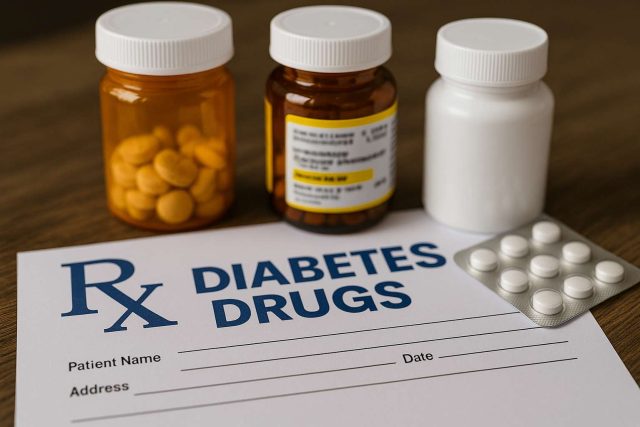In 2025, diabetes care is evolving rapidly, driven by new pharmaceutical innovations that promise more precise, effective, and patient-friendly treatment options. For clinicians, staying informed about the latest approved diabetes drugs is crucial for optimizing patient outcomes. From novel dual-action therapies to next-generation GLP-1 agonists, these developments represent a shift toward more personalized and preventive care.
Table of Contents
- Overview of 2025 FDA-Approved Diabetes Drugs
- Emerging Drug Classes and Mechanisms
- Clinical Implications for Type 2 Diabetes Care
- Safety, Cost, and Access Considerations
Overview of 2025 FDA-Approved Diabetes Drugs
Several breakthrough diabetes drugs received FDA approval in 2025, marking a significant year for therapeutic advancement. Among the most anticipated are:
- Trezaglutide: A once-weekly GLP-1/glucagon receptor dual agonist that has shown superior HbA1c reduction and weight loss compared to semaglutide.
- Dapagliflozin XR: An extended-release formulation designed for smoother glucose control and fewer side effects in patients with kidney comorbidities.
- Empagliflozin/Finerenone combo: A fixed-dose combination approved for patients with type 2 diabetes and advanced chronic kidney disease.
These drugs were fast-tracked based on promising data from large-scale trials and real-world evidence showing improved adherence and quality of life.
Emerging Drug Classes and Mechanisms
In addition to enhancements to existing drug classes, 2025 has introduced new mechanisms of action aimed at the complex physiology of type 2 diabetes.
- Dual incretin therapies continue to gain traction. These agents target both GLP-1 and GIP receptors, offering better glycemic control and cardiometabolic protection.
- AMPK activators are being tested for their potential to improve insulin sensitivity and lipid metabolism, expanding the arsenal beyond glucose-lowering.
- Microbiome modulators have entered early-stage trials. These drugs alter gut flora composition to influence glucose metabolism and inflammation.
These trends reflect a shift from glycemic control alone to targeting obesity, inflammation, and cardiovascular health within diabetes care.
Clinical Implications for Type 2 Diabetes Care
For healthcare providers, these new diabetes drugs come with both opportunities and responsibilities. With novel mechanisms and formulations, patient education becomes even more essential. Shared decision-making is critical, especially when switching patients from traditional agents like sulfonylureas or insulin to newer options.
Additionally, the dual benefits of glycemic control and weight reduction can help clinicians address comorbidities like non-alcoholic fatty liver disease (NAFLD) and hypertension more holistically.
Many of these therapies also support once-weekly or even once-monthly dosing, enhancing adherence in populations where polypharmacy or injection fatigue is a concern. For instance, Trezaglutide has shown a 92% adherence rate in post-marketing studies, significantly higher than earlier GLP-1 agents.
For more clinical perspectives and case studies, explore the Diabetes in Control articles archive.
Safety, Cost, and Access Considerations
Although the therapeutic benefits are promising, clinicians must weigh cost and accessibility. Some newer diabetes drugs may not yet be covered under all insurance plans, potentially creating equity gaps in treatment.
Safety remains paramount. While most GLP-1 and SGLT2 combinations have favorable profiles, there are still risks of:
- Genitourinary infections
- Dehydration and hypotension
- Rare cases of pancreatitis or ketoacidosis
Therefore, clinicians should monitor kidney function, electrolyte balance, and patient-reported side effects closely. Pharmacogenomics may soon play a larger role in identifying which patients are most likely to benefit without adverse reactions.
Patient assistance programs and emerging biosimilars may also help reduce financial barriers in the next 12-24 months.
If you’re advising a patient or need guidance on drug selection, consider using professional consult services like Healthcare.pro.
Conclusion
2025 marks a pivotal year in diabetes treatment innovation. The latest diabetes drugs are not only tackling blood sugar levels but also addressing weight management, kidney function, and cardiovascular risk. For clinicians, understanding the science, benefits, and barriers of these therapies is essential to delivering modern, evidence-based care.
By staying up to date on FDA approvals and emerging clinical data, healthcare providers can ensure their patients are receiving the most effective and individualized treatment plans.
FAQs
What are the newest diabetes drugs approved in 2025?
Trezaglutide, Dapagliflozin XR, and an Empagliflozin/Finerenone combo are among the most notable.
Are these drugs suitable for all patients with type 2 diabetes?
Not necessarily. They are often recommended for those with specific comorbidities or poor response to traditional therapies.
Do these drugs help with weight loss?
Yes. Many GLP-1-based therapies offer significant weight reduction benefits.
Are the new diabetes drugs covered by insurance?
Coverage is expanding, but access can still be limited depending on the plan.
Where can clinicians get more information?
Clinicians can visit DiabetesInControl.com or consult other peer-reviewed journals.
“This content is not medical advice. For any health issues, always consult a healthcare professional. In an emergency, call 911 or your local emergency services.”
